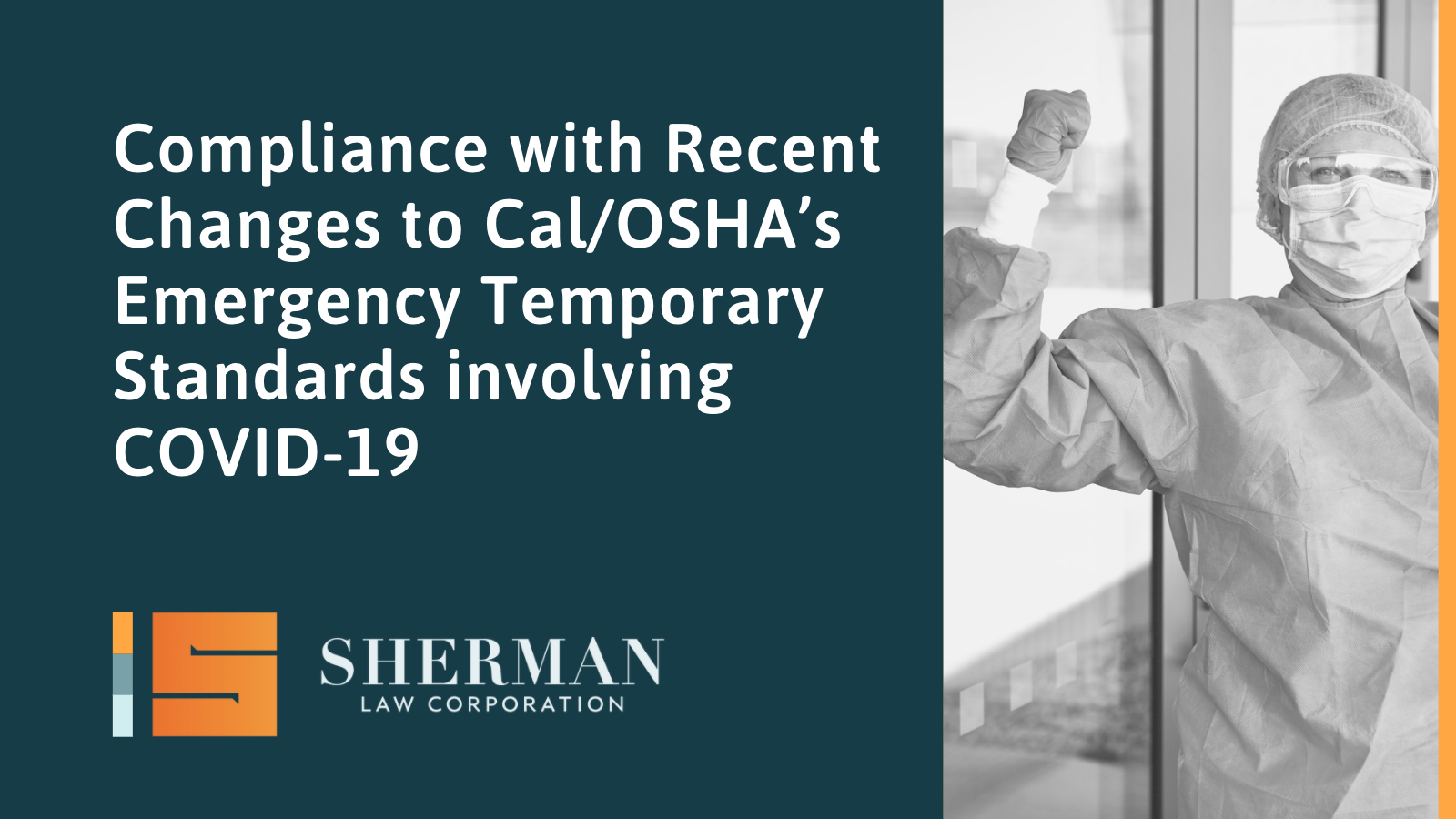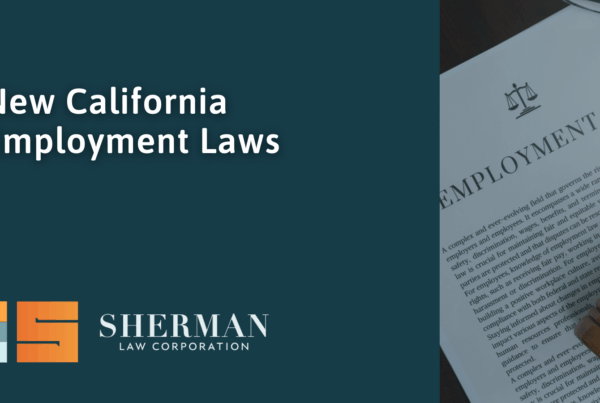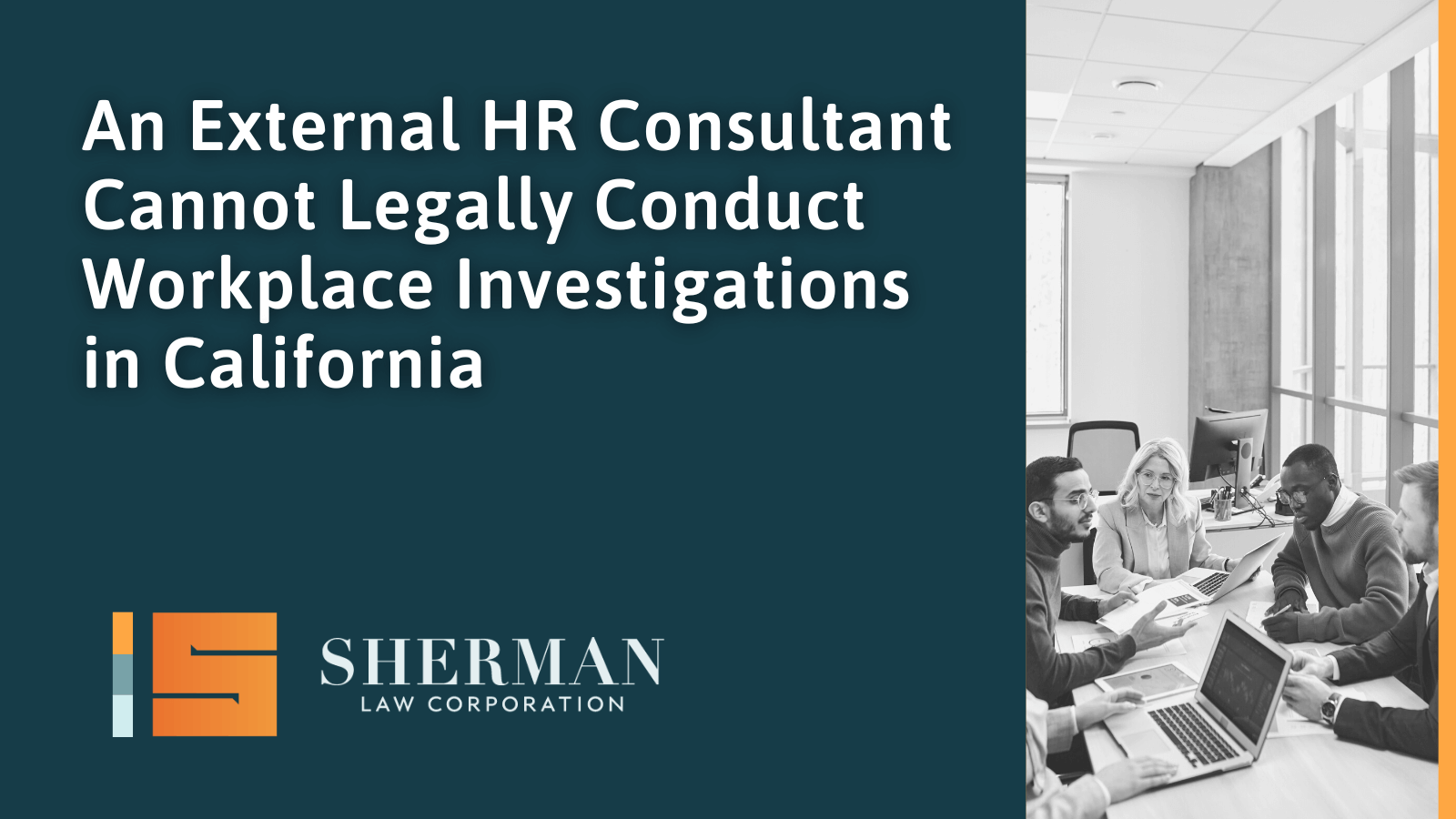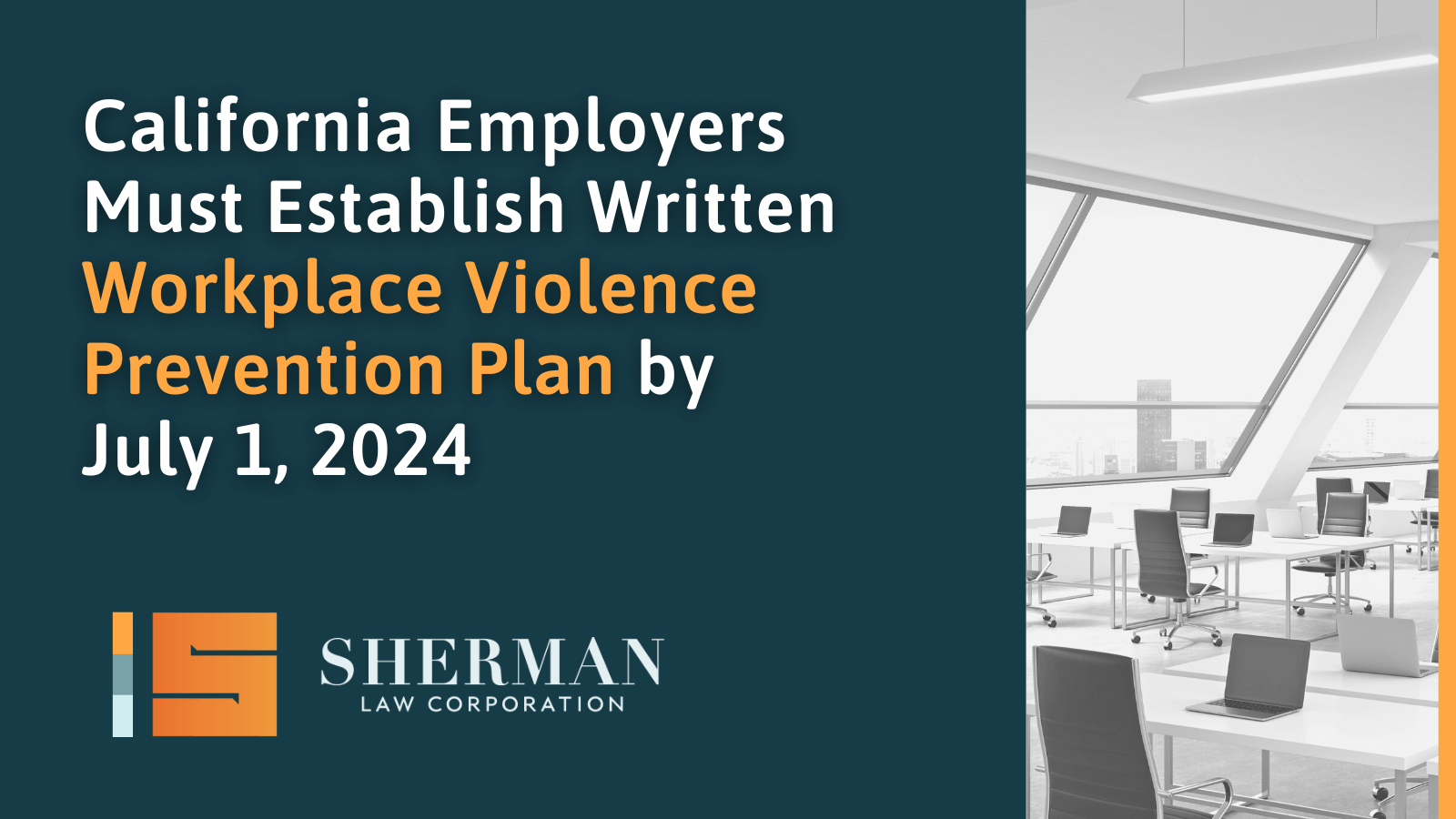
California employers must ensure that they are compliant with the recent changes that went into effect on 1/14/22 as to Cal/OSHA’s Emergency Temporary Standards (“ETS”).
The ETS applies to all employers in California with the exception of:
- Those work locations that only have one employee who is isolated from others,
- Employees who are working remote from home or at another location of their choosing, or
- Employees who are covered under Title 8, section 5199 (Aerosol Transmissible Disease) standard.
Although most of the ETS requirements remain the same – such as creating and implementing a written COVID Prevention Plan (“CPP”), investigating and responding to COVID+ cases, providing written notice to employees of possible exposure, and training and offering testing to those employees who had a close contact at the workplace – significant changes have been made, concerning the exclusion of COVID+ cases and close contacts, and return to work requirements.
Previously, a default 10-day quarantine period was required for those close contacts who did not develop symptoms, and those who were either fully-vaccinated or had recently recovered from COVID-19 were exempted from having to quarantine. Now, the ETS mirrors the California Dept. of Public Health’s (“CDPH”) isolation and quarantine guidelines, found here.
While employers are encouraged to read the CDPH guidelines in full, for practical purposes the CDPH breaks down employee close contact exposures into three categories:
- Those who are unvaccinated,
- Those fully-vaccinated and booster eligible (but not yet boosted), and
- Those boosted, or those fully-vaccinated (but not yet eligible for their booster).
For employees who have close contacts with COVID+ cases who are not vaccinated, they must quarantine for at least 5 days, and can end quarantine after Day 5 if and only if:
- They are asymptomatic, and
- They test negative on day 5 or later. If unable to test or the employee chooses not to test, then quarantine can end after day 10, if they remain asymptomatic. If the employee returns earlier than 10 days, they must wear a well-fitting mask around others for a total of ten days, especially in an indoor setting. (Note: the CDPH still requires the wearing of face masks in all indoor public settings.) This order has been extended until February 15, 2022.) See here, and here for information regarding the mask mandate.
For those close contacts who are fully-vaccinated and booster eligible (but not boosted), they do not need to quarantine if:
- They are asymptomatic,
- They test on Day 3-5, and
- They wear a well-fitting mask around others for 10 days. However, if unable to test on Day 3-5, or if they develop symptoms, then the employee must quarantine under the same guidelines as someone who is not vaccinated.
For close contacts who are boosted (or fully-vaccinated but not yet booster eligible), they do not need to quarantine if:
- They are asymptomatic,
- They test on Day 5, and
- They wear a well-fitting mask around others for 10 days. However, if they cannot test on Day 5, they must both wear a face covering and maintain both 6 feet minimum distance from others, for a total of 14 days following the close contact.
While the CDPH does not list an exception for quarantining for those employees who recovered from having COVID-19, the ETS does allow an exception for those who had COVID and recovered, as long as it was within the last 90 days from onset of symptoms, or from the date of initial test (if asymptomatic). However, if this exception is utilized, the employee must maintain six feet of social distancing and wear a face covering around others for 14 days following the last close contact.
Lastly, for those employees who actually test positive for COVID-19, all are subject to the same isolation and return to work requirements, regardless of vaccination status or prior infection. They must stay home for at least 5 days, and can return after day 5 only if symptoms are not present or are resolving, and they test negative on day 5 or later. If the employee is unable or chooses not to test, then isolation can end after day 10, if symptoms are not present or are resolving. If symptoms, other than fever, are not resolving, then the employee must continue to isolate until symptoms are resolving or until after day 10. However, if a fever persists, then isolation needs to continue until the fever resolves.
Similar to the quarantine requirements, if the employee returns to the workplace “early” (i.e., prior to 10 days), they are still required to wear a well-fitting mask around others for a total of 10 days.
Employers should also be aware of the new and updated definition of what qualifies as a “COVID-19 Test.” In the context of take-home tests, the ETS now does not allow a test to both be “self-administered and self-read” unless observed by either the employer or telehealth professional.
Employers should be vigilant and be prepared for Cal/OSHA to step up their enforcement efforts, and update their COVID Prevention Plans immediately to comply.
Should you have any questions, do not hesitate to contact Lisa Sherman at (323) 488-2087 or Lisa@sherm-law.com.




